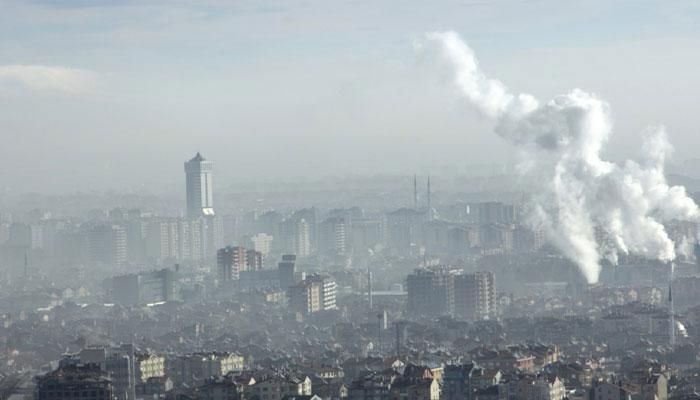
Environmental Health Policy Analyst
Published: August 4, 2025
The Study: From AQI to Health Risk Index
A new policy paper by Indian researchers recommends transforming the existing Air Quality Index to include explicit health-risk indicators—creating what they term an Air Quality Health Index (AQHI). This enhanced index would communicate real-time mortality and morbidity risks for citizens, making air pollution warnings significantly more actionable (turn0search0.
According to Dr. Dey, one of the study’s co-authors, India already has the necessary systems in place; what’s needed is to integrate city-specific air quality data with mortality statistics—a task that he suggests can be completed within months and at minimal cost (turn0search0.
Why It Matters: Air Pollution’s Deadly Toll
Ambient and household air pollution in India kills an estimated 670,000 people each year, aggravating conditions like chronic bronchitis, asthma, heart disease, diabetes, and lung cancer (turn0search24. Recent research has shown that even modest increases in PM₂.₅ levels above the National Ambient Air Quality Standard (40 μg/m³) double the risk of mortality in children and increase adult death risk by up to 13% (turn0search6turn0search7.
In heavily polluted districts, children under five face a 100–120% higher mortality risk, while newborns are 86% more likely to die—a public health crisis emerging beyond acknowledged parameters (turn0search7turn0search11.
Limits of the Current AQI
India’s existing AQI system categorizes air quality across six bands—Good to Hazardous—based on pollutant sub-indices for PM₂.₅, PM₁₀, NO₂, SO₂, CO, O₃, NH₃, and Pb (turn0search25. But the system lacks explicit health risk messaging, limiting public understanding and responsiveness.
As Dr. Dey told Health Policy Watch: “Without linking AQI to health risk, warnings fall on largely deaf ears. People often ignore air alerts because they lack context.” He added that this disconnect mirrors tobacco—a system that avoids labeling responsibility by attributing outcomes to individual behavior rather than structural exposure (turn0search0.
Real-Life Exposure Leads to Disease
A nationwide time-series analysis of over 3.6 million deaths across 10 major cities found that every 10 μg/m³ increase in PM₂.₅ contributes to a 1.4% rise in daily mortality, with the effect much larger in less polluted cities like Bangalore and Shimla (turn0search10.
Other Indian research links air pollution exposure—especially PM₂.₅—to higher incidence of type 2 diabetes, elevated blood pressure, and vascular inflammation. According to a Delhi-Chennai study, the risk of diabetes increased by 22% for every 10 μg/m³ rise .
Combined Risks: Ambient + Household Pollution
Many Indian households rely on solid biomass fuels for cooking, compounding outdoor air pollution. The combined exposure amplifies health risks—especially in districts where both ambient PM₂.₅ and indoor pollution exceed safety thresholds (turn0search6.
Estimates suggest more than 3.8 million deaths between 2009 and 2019 were attributable to PM₂.₅ levels above India’s own air quality norms—and up to 16.6 million deaths if compared with stricter WHO guidelines (5 μg/m³) (turn0search2.
Vulnerable Populations Paid the Price
Children and the elderly suffer disproportionately:
Children under five: 100–120% rise in mortality in polluted districts (turn0search7turn0search11.
- Up to 86% more newborns are at risk for PM₂. hotspots .
Elderly patients: higher incidence of daily living disabilities (ADL), cognitive decline, and respiratory disease.
Policy Gaps & Why AQHI Matters
Despite mounting scientific evidence, the Indian government has often claimed there is “no conclusive data” linking pollution directly with deaths in Parliament (turn0search0turn0search1.
An AQHI would:
Translate pollutant measurements into direct health risk warnings, such as increased mortality probability.
Encourage credible public engagement in preventive behavior, particularly on high-risk days.
Drive local accountability—forcing municipal bodies to act when health risks cross thresholds.
Bridge gaps between environment and health ministries, enabling data-driven policymaking.
Expert Views: Potential & Challenges
Experts commend the proposal as “cost-effective yet profound in impact.” Institutions like the IITs and Public Health Foundation of India have advocated similar frameworks in the past ,
However, challenges remain:
Access to thorough mortality and pollution statistics (provided by the NCDC and the health ministry)
Ensuring real-time reporting infrastructure across smaller cities
- Organizing responsibilities across environmental and health departments with many state jurisdictions
What Should Come Next?
| Action Item | Why It’s Critical |
|---|---|
| Develop city-wise AQHI standards | Tailored risks improve public compliance |
| Integrate mortality data with AQI | Adds credibility and urgency to air quality alerts |
| Launch public education campaigns | Helps citizens understand steps to mitigate harm |
| Ensure accountability via transparency | Addresses government claims of data unavailability |
Broader Impact: Beyond Daily Warnings
A functioning AQHI can:
Support school-closure decisions during severe pollution events
Help seniors and chronic patients adjust medicine regimes/schedule outdoor routines
Push cities toward pollution control measures such as FGD installation in power plants, cleaner transport, and regulated construction activity
Strengthen regional health outcomes in states like UP, Bihar, Delhi—where life expectancy loses due to pollution exceed 8 years on average (turn0search9
Final Word: From Data to Action
The call to redesign AQI into a health-risk-focused AQHI reflects the evolving understanding of air pollution as not just an environmental issue, but a direct and pressing public health crisis.
With millions of preventable deaths, widespread chronic disease burden, and increased vulnerability among children and elderly, linking daily AQI readings to potential health outcomes isn’t just actionable—it’s essential.
As India prepares for its next environmental and health policy reviews, policymakers must prioritize integrated metrics, transparent alerts, and systemic accountability. Only then can finally the air we breathe stop stealing our lives—and become a measure of well-being, not warning.
air quality index/air quality index/air quality index/air quality index/air quality index/air quality index/air quality index/air quality index/air quality index
Indian Study Urges AQI Reform: Link Index to Real Health Risks Source
For more health related click here
